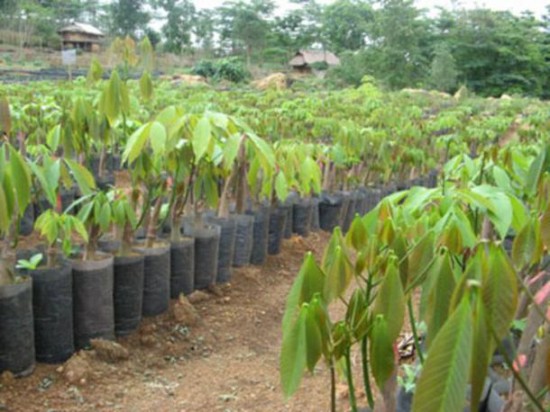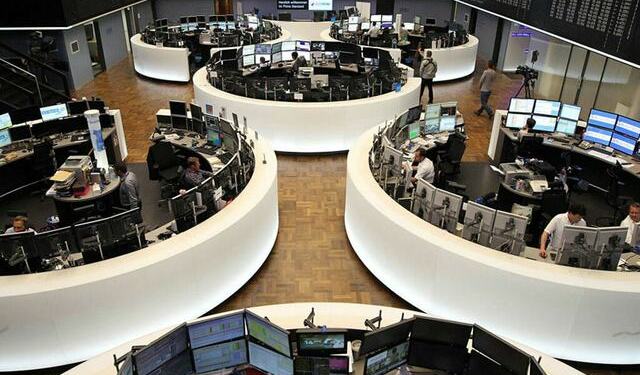Natural rubber today accounts for something like a third of the world’s production of all rubbers and nearly 85 percent of the output comes from Southeast Asia. Technical and economic problems that have manifested themselves in the past in relation to production and marketing of natural rubber vary somewhat among producing countries but many main features are generally common. These are:
- Natural rubber is of immense socio-economic importance to the producing areas.
- The industry is a substantial source of employment and is basically worked by small men who own, in some cases, up to 95 percent of the total area under rubber.
- The produce continues to be sold through a commodity market in which producers have very little control on the price.
- The trees in all producing countries generate a single type of cis-polyisoprene.
 Plans for future
Plans for future
The basic problems of the industry stem from the intensification of competitive market forces in the years immediately after the Second World War, resulting in an almost monotonic decline in the prices of natural rubber. What does this price decline mean overall to the producing countries? If the total natural rubber production were to have remained static from 1960, this would have represented a loss in export income of several millions.
However, because of rising production efficiency, the actual loss has come down for all producing countries. What the situation portrays is one of continual erosion of the efforts of producing countries to increase production and productivity.
Unenlightened opinion for this unhappy state of affairs sometimes ascribes the price decline to over production of natural rubber. But this is hardly consistent with the pattern of total consumption vis-a-vis the production of both natural and
synthetic rubbers over the past 20 years.
Impregnably, implicit in this is that any attempt to restrict production of natural rubber to maintain prices would most certainly lead to further encroachment of synthetic rubber, i.e. a shrinkage in natural rubber share of the world market. Indeed the fact that the total rubber consumption has been increasing at a considerably faster rate than the natural rubber production has, for this reason alone, inevitably led to displacement of natural rubber from uses for which it remains fully techno-economically satisfactory.
The competitive forces thus called into play have led to serious market weaknesses of natural rubber. On the one hand, the synthetic rubber industry, “intoxicated” as it were with the availability of apparently abundant and cheap petro-chemicals from the petroleum industry, miscalculated their long-term capacity. On the other hand, the natural rubber industry, through lack of confidence and unappreciative of its own strength and uniqueness, has lagged behind in its investment policy. While the SR industry continued to expand in its production capacity, the natural rubber industry exerted only a weak effort.
In the inevitable fight for survival, the natural rubber industry was left with no alternative but to implement modernisation programmes in totality. These comprised:
- Reduction in overall cost of production so as to produce rubber at economically low prices, and
- Measures for improving productivity per unit land area,
- Improvement in quality, presentation and grading.
The achievements of these programmes need no repetition here. Improvements in respect of production and productivity in the natural rubber industry have been substantial in the last 10 years. A number of biological developments arising from research have already ensured the sound economic base of ‘Hevea’ cultivation and production. I refer especially to:
- Horticultural techniques combining the root, trunk and crown systems to produce the ‘i d e a l’ trees long dreamt of by plant breeders;
- The development of high-yielding planting materials with yield capacities in excess of 4,500 kg/ha, including the efficacy of improved agronomic practices to bring planting materials into maturity in a period of four years and optimisation of yield through discriminatory fertilisation;
- Development of yield stimulation techniques enabling trees already planted and of different ages and varieties to express their full genetic potential, thereby effecting modernisation without resorting to premature replanting.
The fact that the natural rubber industry has not only withstood the competitive pressures exerted by a powerful oligopolistic industry, which is backed by the massive resources of multinationals and industrially advanced countries, but has also successfully and substantially carried out a radical face-lifting modernisation. This, speaks as nothing else can for the inherent soundness and strength of natural rubber. The natural rubber industry need not only to exploit the slogan of “replant or die” but has also assumed the need to “modernise or perish” as the key solution in the last decade.
Potentials of natural rubber
The potentials of natural rubber have been adequately exhibited by the innovations already available through biological and technological research. Let us briefly survey some of these.
Biological innovations
- The concept of utilising ‘Hevea’ plants as a composite source of raw materials is now possible. With precocious high-yielding materials and efficient use of stimulants to enhance flow, a replanting cycle of 20 years is manifestly attractive. At the end of this period, the rubber timber after proper chemical treatment can be successfully used for furniture, panelling, flooring and numerous other applications including pulp and paper.
- The traditional immaturity period of five to six years can now be significantly reduced to three to four years by the use of advanced planting materials and modern agronomic practices.
- Compared with the current annual average yields in the producing countries, which range from 900 — 1000 kg/ha, proven planting materials yielding more than 2500 kg/ha are available for commercial exploitation.
- Yield stimulation using ethylene gas in the form of Ethrel, or as a gas in molecular sieves, has given a procedure through which mature trees already on the ground can be modernised. By stimulating rubber trees of 10 years of age or more in tapping, the production of most planting materials can be increased by 60—100 percent. Even old trees upward tapped with stimulation on the virgin panel can provide a substantial increase in yield levels.
- The utilisation of latex as a soil conditioner in sandy soils and other poor soil structures, together with encapsulation of fertilisers have shown immediate and distinct benefits.
Industry of small man
The rubber industry in Southeast Asia is characterised by the preponderance of the small farmers who own and cultivate some 67 percent of the total planted area in Malaysia, 78 percent in Indonesia, 95 percent in Thailand and 65 percent in Sri Lanka. Most of the smallholdings are less than 10 acres apiece and arc widely scattered. It is because natural rubber is capable of growing in very diverse conditions, difficult terrain and is not overly sensitive to management standards that the confidence of the small man has been generated in the cultivation of ‘Hevea’.
Flexibility in the demand for agro-management inputs and flexibility in the scale of production and processing have made natural rubber an almost ideal crop for smallholders. To increase the supply for the present and beyond, it is necessary that the confidence of the small man in the rural sectors of South East Asia be sustained and enhanced. There is, therefore, a compelling need to modernise these operations.
Low productivity of the smallholders stems from their inability or the slow rate to absorb the known technologies available in the industry. Clearly, this must be overcome. We have the technologies to do this; the transfer to the smallholders must be given a new dimensional motivation. It must be pursued with vision with a missionary zeal.
In the new found strength of natural rubber in the world market, its ‘Achilles’ heel’ remains to be the price instability. The vagaries of a commodity market have to be controlled. While a dynamic production policy for natural rubber is essential, the dilemma faced by the producers of natural rubber is transient imbalances causing these price fluctuations, which are further complicated by speculation and other subjective market forces.
Planned scene of future
The basic factors that must be catered for are:
- The consumption for natural rubber must be diversified into (1) special purpose uses employing the elastomeric properties, and (2) non-elastomeric uses by modification of the natural rubber molecule,
- A dynamic and vigorous production policy in all producing countries,
- The multiplicity of grades of natural rubber must disappear and instead there should be one general purpose grade, i.e. Standard Natural Rubber (SNR) from the producing regions of the world,
- Natural rubber should be considered as a composite material with its latex, its timber and its seeds providing sources of raw materials of the future.
Conclusion
How are these factors to be met? In what way could this become manifest as the ideal producing scene of the future? Let me now describe to you the natural rubber scene of tomorrow.
The growing of natural rubber will be in economically viable smallholdings consolidated together into a plantation-type operation. Each unit of the composite plantation will be operated by shareholder workers. Management of each composite plantation will be in the hands of fully qualified technical personnel.
Planting materials will be supplied from a central unit with decentralised nurseries of a few selected high-yielding materials. Such materials would have undergone genetic improvements not only through breeding in the conventional sense but modification at the cell level through tissue culture. All high-yielding planting material supplies would have guaranteed average yield levels in excess of 3000 kg/ha/yr during its mature period. Discriminatory manuring and effective intercropping programmes would be exercised.
Replanting programmes will be based on a 20-year cycle. At the end of 20 years, the trees will generate adequate timber as a continuous and constant source for furniture, panelling, flooring and pulp for the paper and packaging industry.
Exploitation systems would be based on those applicable to the new variety of ‘Hevea’ which would respond to millimetre cuts. This would entail a revolutionary tapping system allowing a worker to tap more than a thousand trees. Stimulation would be carried out soon after maturity. Collection of latex will be in polythene bags at intervals of a month. Liquid latex will only be collected for special purposes for reversible paste manufacture and for latex compounding. All agricultural operations will cease with tapping, after which industrial operations will commence with collection of polybags of latex.
Source: dailymirror.lk/business/features/47354-natural-rubber–plans-for-the-future.html





























